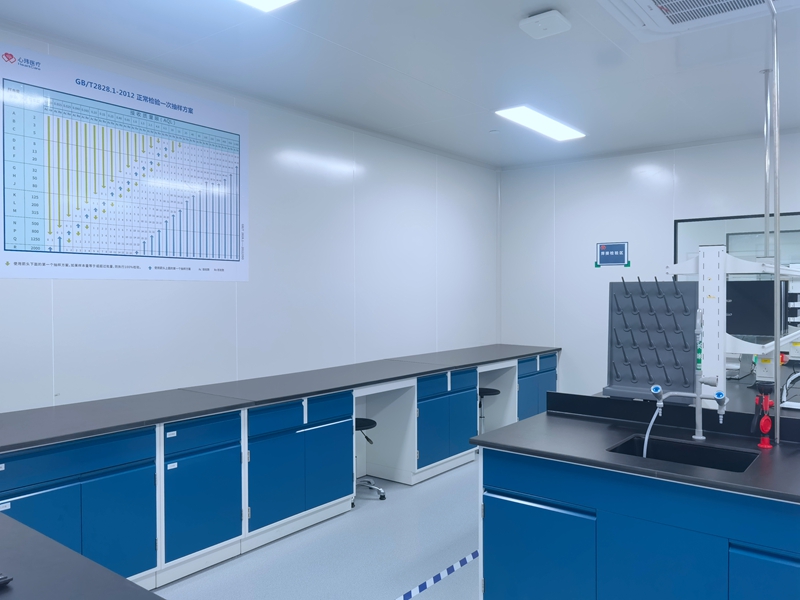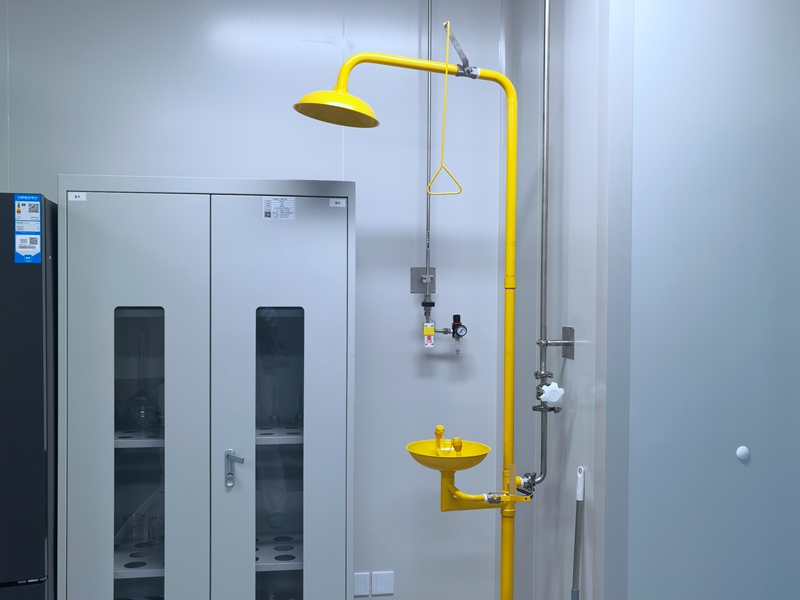

Clean rooms are used in many industrial sectors, such as the manufacturing of optical products, the manufacturing of smaller components, large electronic semiconductor systems, the manufacturing of hydraulic or pneumatic systems, the production of food and beverages, the pharmaceutical industry, etc. The clean room decoration involves many comprehensive requirements such as air conditioning, electromechanical, weak electricity, water purification, fire prevention, anti-static, sterilization, etc. Therefore, in order to decorate the clean room very well, you must understand the relevant knowledge.
Clean room refers to the elimination of particles, toxic and harmful air, bacterial sources and other pollutants in the air within a certain space, and the temperature, cleanliness, air flow speed and air flow distribution, indoor pressure, noise, vibration, lighting, static electricity, etc. are controlled within a certain required range, and the room or environmental room is designed to have special significance.
1. Clean room decoration cost
What factors affect the decoration cost of clean room? It is mainly determined by eleven factors: host system, terminal system, ceiling, partition, floor, cleanliness level, illumination requirements, industry category, brand positioning, ceiling height, and area. Among them, the ceiling height and area are basically invariable factors, and the remaining nine are variable. Taking the host system as an example, there are four main types on the market: water-cooled cabinets, direct expansion units, air-cooled chillers, and water-cooled chillers. The prices of these four different units are completely different, and the gap is very large.
2. Clean room decoration mainly includes the following parts
(1) Determine the plan and quotation, and sign the contract
Generally we first visit the site, and many plans need to be designed based on the site conditions and the products produced in clean room. Different industries have different requirements, different levels, and different prices. It is necessary to tell the designer the cleanliness level, area, ceiling and beams of the clean room. It is best to have drawings. It facilitates post-production design and reduces time. After the plan price is determined, the contract is signed and construction begins.
(2) Floor layout of clean room decoration
Clean room decoration generally includes three parts: clean area, quasi-clean area and auxiliary area. The clean room layout can be in the following ways:
Wrap-around verandah: The verandah can have windows or no windows, and is used for visiting and placing some equipment. Some have on-duty heating inside the verandah. Exterior windows must be double-seal windows.
Inner corridor type: The clean room is located on the periphery, and the corridor is located inside. The cleanliness level of this corridor is generally higher, even the same level as the dust free clean room. Two-end type: the clean area is located on one side, and the quasi-clean and auxiliary rooms are located on the other side.
Core type: In order to save land and shorten pipelines, the clean area can be used as the core, surrounded by various auxiliary rooms and hidden pipeline spaces. This method avoids the impact of outdoor climate on the clean area and reduces cold and heat energy consumption, conducive to energy saving.
(3) Clean room partition installation
It is equivalent to the general frame. After the materials are brought in, all the partition walls will be completed. The time will be determined according to the area of the factory building. Clean room decoration belongs to industrial plants and is generally relatively fast. Unlike the decoration industry, the construction period is slow.
(4) Clean room ceiling installation
After the partitions are installed, you need to install the suspended ceiling, which cannot be ignored. Equipment will be installed on the ceiling, such as FFU filters, purification lights, air conditioners, etc. The distance between hanging screws and plates must be in accordance with regulations. Make a reasonable layout to avoid unnecessary trouble later.
(5) Equipment and air conditioning installation
The main equipment in clean room industry includes: FFU filters, purification lamps, air vents, air showers, air conditioners, etc. The equipment is generally a bit slower and takes time to create the spray paint. Therefore, after signing the contract, pay attention to the arrival time of the equipment. At this point, the workshop installation is basically completed, and the next step is the ground engineering.
(6) Ground engineering
What kind of floor paint is suitable for what kind of ground? What should you pay attention to during the floor paint construction season, what is the temperature and humidity, and how long after the construction is completed before you can enter. Owners are advised to check first.
(7) Acceptance
Check that the partition material is intact. Whether the workshop reaches the level. Whether the equipment in each area can operate normally, etc.
3. Selection of decoration materials for clean room
Interior decoration materials:
(1) The moisture content of the wood used in clean room should not be greater than 16% and must not be exposed. Due to the frequent air changes and low relative humidity in dust free clean room, if a large amount of wood is used, it is easy to dry out, deform, loosen, produce dust, etc. Even if it is used, it must be used locally, and anti-corrosion and moisture-proof treatment must be done.
(2) Generally, when gypsum boards are needed in clean room, waterproof gypsum boards must be used. However, because biological workshops are often scrubbed with water and rinsed with disinfectant, even waterproof gypsum boards will be affected by moisture and deform and cannot withstand washing. Therefore, it is stipulated that biological workshops should not use gypsum board as covering material.
(3) Different clean room also need to consider different individual needs when selecting indoor decoration materials.
(4) Clean room usually requires frequent wiping. In addition to wiping with water, disinfectant water, alcohol, and other solvents are also used. These liquids usually have certain chemical properties and will cause the surface of some materials to discolor and fall off. This must be done before wiping with water. Decoration materials have certain chemical resistance.
(5) Biological clean room such as operating rooms usually install an O3 generator for sterilization needs. O3 (ozone) is a strong oxidizing gas that will accelerate the oxidation and corrosion of objects in environment, especially metals, and will also cause general coating surface fades and changes color due to oxidation, so this type of clean room requires its decoration materials to have good oxidation resistance.
Wall decoration materials:
(1) Ceramic tile durability: Ceramic tiles will not crack, deform, or absorb dirt for a long time after they are laid. You can use the following simple method to judge: drip ink on the back of the product and see if the ink spreads automatically. Generally speaking, the slower the ink spreads, the smaller the water absorption rate, the better the intrinsic quality, and the better the product durability. On the contrary, the worse the product durability.
(2) Anti-bacterial wall plastic: Anti-bacterial wall plastic has been used in a few clean rooms. It is mainly used in auxiliary rooms and clean passages and other parts with lower cleanliness levels. Anti-bacterial wall plastic mainly uses wall pasting methods and joints. The dense splicing method is similar to wallpaper. Because it is adhesive, its lifespan is not long, it is easy to deform and bulge when exposed to moisture, and its decoration grade is generally low, and its application range is relatively narrow.
(3) Decorative panels: Decorative panels, commonly known as panels, are made by precision planing solid wood boards into thin veneers with a thickness of about 0.2mm, using plywood as the base material, and are made through an adhesive process with a single-sided decorative effect.
(4) Fireproof and thermal insulation rock wool color steel plates are used in suspended ceilings and walls. There are two types of rock wool sandwich panels: machine-made rock wool sandwich panels and handmade rock wool sandwich panels. It is common to choose machine-made rock wool sandwich panels for decoration costs.
Post time: Jan-22-2024

